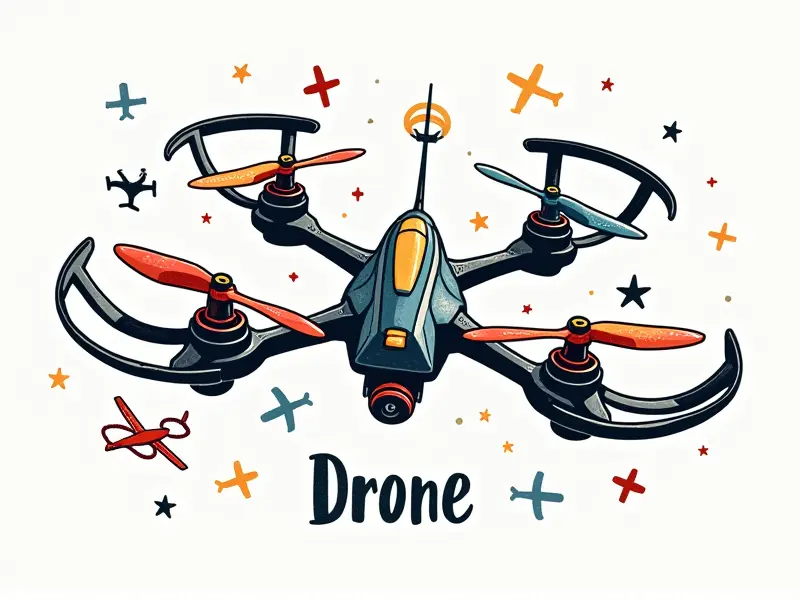How does Li-ion battery work?

How Li-Ion Batteries Work: A Comprehensive Guide
Lithium-ion (Li-ion) batteries have revolutionized the world of remote-controlled (RC) flying and FPV racing. Their high energy density, lightweight nature, and reliability make them an essential component in modern drones and RC models. This article delves into how Li-Ion batteries work, their impact on flight performance, charging tips, and more.
Why Li-Ion Batteries Rule in RC Flying
Lithium-ion batteries are the preferred choice for RC flying due to several key advantages:
- High Energy Density: Li-Ion batteries pack a lot of power into a small, lightweight package.
- Long Cycle Life: They can be charged and discharged hundreds of times without significant degradation.
- Voltage Stability: Unlike NiMH or NiCd batteries, Li-Ion batteries maintain a consistent voltage throughout their discharge cycle.
Maximizing Flight Time with Li-Ion Batteries
To get the most out of your Li-Ion battery and extend flight time, consider these tips:
- Select High-Capacity Cells: Opt for batteries with higher mAh ratings to store more energy.
- Balanced Charging: Use a balance charger to ensure each cell is charged evenly and prevent damage.
Unraveling the Secrets of Li-Ion Battery Tech
The technology behind Li-Ion batteries involves several key components:
- Lithium Cobalt Oxide (LCO): Common in consumer electronics for its high energy density.
- Lithium Iron Phosphate (LiFePO4): Known for safety and long cycle life, often used in industrial applications.
Charging Tips for Long-Lasting Li-Ion Batteries
To ensure your Li-Ion batteries last as long as possible:
- Avoid Overcharging: Use a charger with overcharge protection to prevent damage.
- Store Properly: Keep batteries in a cool, dry place and avoid exposing them to extreme temperatures.
The Role of Li-Ion Batteries in FPV Racing
In the fast-paced world of FPV racing, Li-Ion batteries play a crucial role:
- Power Density: High power density is essential for quick bursts of speed.
- Lightweight Design: Reduces overall weight to improve maneuverability and performance.
Understanding Li-Ion Battery Specs for Drones
When choosing a battery for your drone, consider these specifications:
- Voltage (V): The nominal voltage of the battery pack.
- Ampere-Hour Rating (mAh): Indicates the capacity and energy storage capability.
Powering Up with Li-Ion: A Closer Look
The internal workings of a Li-Ion battery involve:
- Cathode and Anode Materials: These materials determine the battery's performance characteristics.
- Liquid Electrolyte: Facilitates ion movement between electrodes during charging and discharging.
How Li-Ion Batteries Keep Your Drone Soaring
The efficiency of Li-Ion batteries ensures your drone stays in the air longer:
- Energy Efficiency: Converts more energy into usable power compared to other battery types.
- Weight-to-Power Ratio: Provides a better balance between weight and performance.
Why Li-Ion Batteries Rule RC Models
The versatility of Li-Ion batteries makes them indispensable for RC models:
- Versatility in Design: Can be customized to fit various model sizes and power requirements.
- Safety Features: Built-in safety mechanisms prevent overcharging and overheating.
The Impact of Temperature on Li-Ion Batteries
Temperature plays a significant role in the performance and longevity of Li-Ion batteries:
- Cold Temperatures: Can reduce battery capacity temporarily but do not damage them.
- Hot Temperatures: May cause rapid degradation if exposed to extreme heat for extended periods.
Maximizing Your Li-Ion Battery Life
To prolong the life of your Li-Ion batteries, follow these best practices:
- Avoid Full Discharge Cycles: Regularly charging before reaching a low state of charge.
- Monitor and Maintain Health: Use battery management systems to monitor health and performance.
In conclusion, Li-Ion batteries are an integral part of modern RC flying and FPV racing. Understanding their technology, proper usage, and maintenance will help you get the most out of your equipment and ensure long-term reliability.

